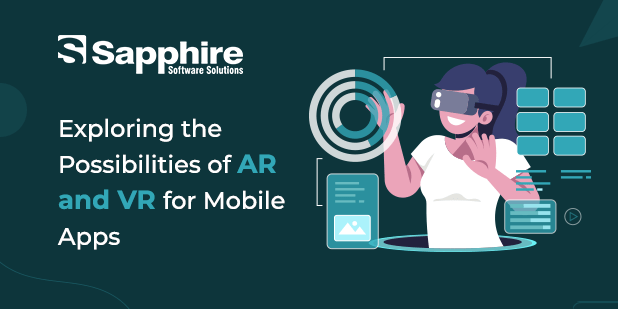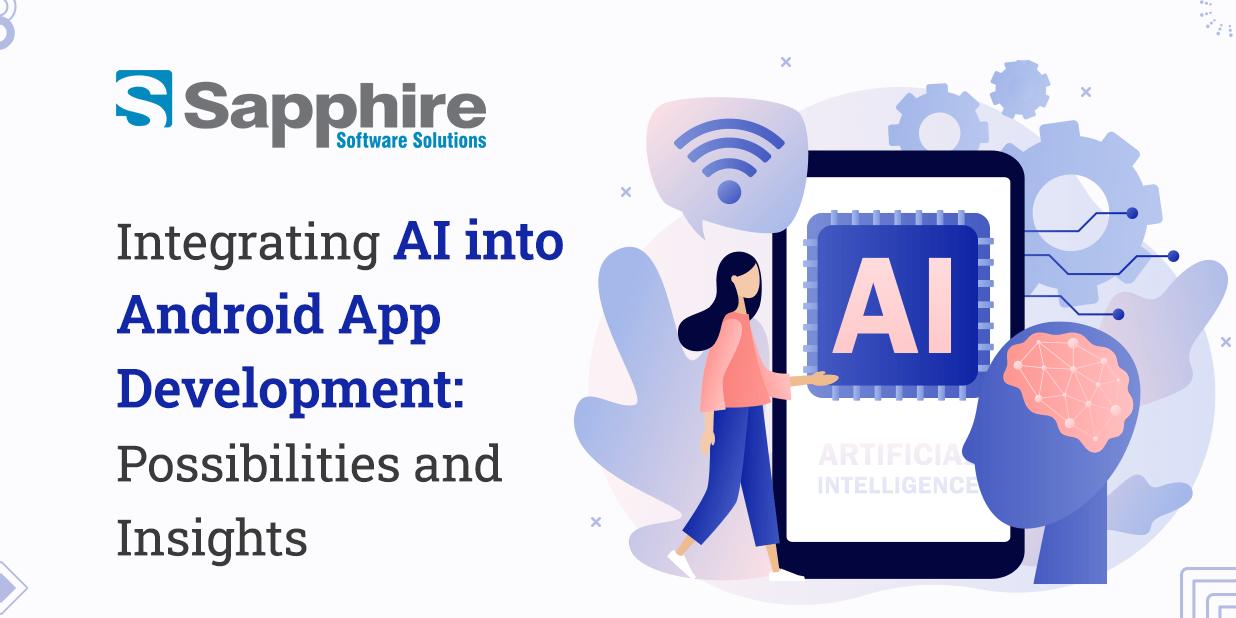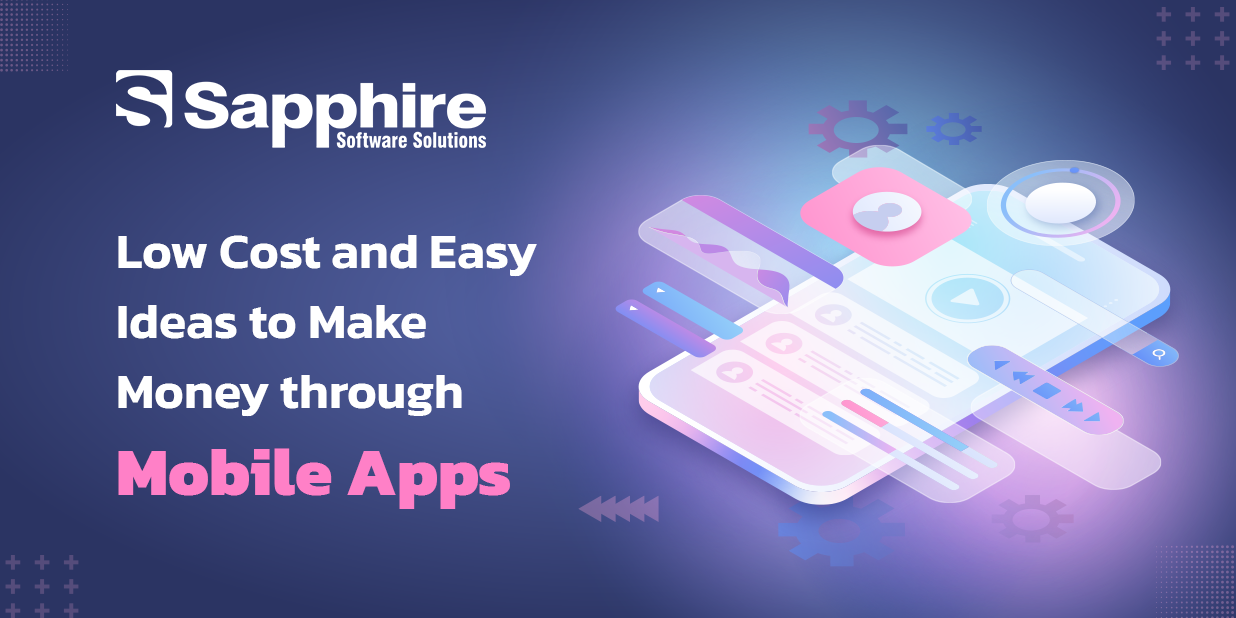Augmented Reality (AR) and Virtual Reality (VR) are two technologies that have attracted much interest in recent years. Even though these technologies have been there for some time, the implementation of these technologies in mobile applications has created new opportunities for both consumers and enterprises. The use cases for augmented and virtual reality technologies are almost limitless, and the former has the potential to revolutionize how we interact with our mobile devices. In this piece, we will investigate the potential of augmented and virtual reality for mobile applications.
What Are AR and VR, anyway?
Although they have specific points in common, augmented and virtual reality are unique technologies. Augmented reality (AR) superimposes digital information onto the physical environment, augmenting both what we see and hear. The difference between augmented reality (AR) and virtual reality (VR) is that AR includes adding digital material to the real world around us. At the same time, VR entirely immerses us in a virtual environment. Virtual reality, on the other hand, obscures one’s view of the outside world and substitutes it with an entirely simulated setting.
Augmented and virtual reality need specialized technology and software to be created. AR typically needs a device equipped with a camera, such as a smartphone or a tablet, to record the actual world. At the same time, virtual reality often requires a gear that filters out the natural world and presents a virtual environment.
AR/VR Market Trends:
The creation of virtual reality (VR) and augmented reality (AR) applications will, without a shadow of a doubt, significantly impact the digital world’s future. You should be informed of current and forthcoming market trends even if the popularity of AR and VR has only just begun to increase.
The concept of driverless cars is becoming more common in today’s society. Several individuals have shown interest in self-driving vehicles and are eager to go behind the wheel of one. Companies are already implementing new voice assistant technology, such as driver-accessible augmented reality in automobiles, as they don’t want to disappoint customers. Incorporating augmented reality technology into the design process for brand-new automobile models is the first step.
The outward presentation of a virtual picture and a user’s total virtual experience in the not-too-distant future is slated to undergo significant transformation. Everything on your mobile devices will run more swiftly owing to the exceptionally fast mobile network, including the transmission of data to and from the cloud. The ongoing progress in 5G mobile app speeds will also enhance user experiences for augmented and virtual reality (AR and VR).
Even though there are a ton of fantastic AR and VR opportunities accessible on mobile devices, Web AR also enables you to make use of these characteristics on your PC. No matter your web browser, you may utilize augmented reality with your search engine if it supports the feature. The user experience will be different in many different areas due to this change since so many items are available on the internet that can be accessed with just the click of a button.
Possibilities of AR for Mobile Apps:–
1. Improved Quality of Life for the End User
Providing consumers with a more dynamic and engaging experience is one way that augmented reality (AR) may improve the user experience of mobile applications. For instance, augmented reality may be used in an app for online shopping to let consumers “try on” virtual clothes before making a purchase. Users would get a more accurate representation of how the apparel will appear on them, boosting their confidence in purchasing.
Moreover, augmented reality may make navigating mobile applications more accessible. For instance, an augmented travel app may use reality to offer users directions and information about various sites of interest while they wander around a new city. Due to this feature, users may find it less challenging to traverse their environments and locate the information they want.
3. Promotional Efforts and Advertising:
AR can also be used for commercial purposes like marketing and advertising. For instance, augmented reality could be used in a retail app to create interactive product displays. These displays enable users to view and interact with products in a simulated setting. This has the potential to boost user engagement as well as contribute to increased revenue.
4. Instruction and Learning Opportunities:
Training and education are two other potential applications for augmented reality. For instance, a language-learning app may employ augmented reality (AR) to superimpose digital labels on real-world items, making the experience of acquiring new vocabulary for app users more immersive. This has the potential to make learning more exciting and productive.
5. Gamification:
AR may also be utilized to provide a gamification aspect to mobile applications. For instance, augmented reality may be used by a fitness program to provide digital prizes for users to gather as they progress toward their fitness objectives. This has the potential to make the app more enjoyable to use and encourage users to maintain their exercise routine.
The Virtual Reality’s Potential for Mobile Applications:–
1. Entertainment with a Complete Immersion:
Immersive entertainment stands out as one of the most apparent applications that virtual reality might have for mobile apps. Virtual reality (VR) can whisk users away to an entirely fabricated setting, where they may engage in activities that would be physically impossible in the actual world. For instance, a mobile app may provide users with a virtual museum or art gallery tour, enabling them to study the exhibits more in-depth. This would be possible since the software would be portable.
2. Enhanced Learning:
VR may also be utilized to boost learning through mobile applications. For instance, a virtual reality (VR)-based history app may take users on a more realistic journey through time, allowing them to experience historical happenings. Due to this, users may find it easier to comprehend and recall historical occurrences.
3. Both Simulation and Training are Provided:
VR may also be utilized for simulation and training purposes. For example, a medical app could use VR to simulate surgical procedures, allowing medical students to practice in a more realistic environment. This has the potential to improve the standard of medical education and training.
4. Visualization of the Product:
Product visualization is another area where virtual reality (VR) can be helpful. For instance, a home design app may employ virtual reality (VR) to generate 3D models of houses and furnishings. This would enable consumers to see what the finished result will look like before purchasing the item. This may assist in lowering the total number of returns while raising the level of consumer happiness.
5. Counseling and maintaining mental health
VR may also be utilized for treatment and mental health objectives. For example, a meditation app may employ VR to transfer users to a serene atmosphere, enabling them to escape everyday life’s rigors. Exposure therapy is another potential use for virtual reality (VR), enabling users to face their phobias in a secure and managed to set. Checkout, Our Virtual Reality Development Services in India, USA.
Challenges of AR and VR for Mobile Apps:–
Although AR and VR offer tremendous promise for mobile applications, specific problems must be solved.
1. Technological Limitations:
Augmented and virtual reality demand robust hardware and software, which might be challenging to achieve on mobile devices. This can cause the performance to be sluggish, the power consumption to be excessive, and the functionality to be restricted.
2. User Experience:
Since augmented reality (AR) and virtual reality (VR) are still relatively new technologies, many people may be unfamiliar with how to utilize them. This may result in the user having a negative experience, leading to frustration and a loss of interest.
3. Cost:
Developing and implementing augmented and virtual reality software may be financially challenging for smaller enterprises and startups.
4. Privacy and Security:
Since they need to collect and process vast volumes of user data, augmented and virtual reality might give rise to privacy and security problems. Businesses that are required to comply with data privacy standards can find this to be a difficult obstacle.
Conclusion:
Both augmented and virtual reality offer much promise for mobile applications, and organizations must consider integrating these technologies into their plans to develop mobile apps. AR can increase the user experience, improve navigation, and be utilized for marketing and education. At the same time, VR may offer immersive entertainment, boost learning, and be used for simulation and treatment. Although there are hurdles connected with these technologies, firms that can overcome them may gain from higher user engagement, enhanced customer satisfaction, and more income.
Both consumers and companies rely on Augmented Reality App Development Companies like Sapphire because we can provide unique advantages and improve the overall shopping experience for customers on various fronts. Our Augmented Reality App Development Services are quite reasonable and reliable.





































